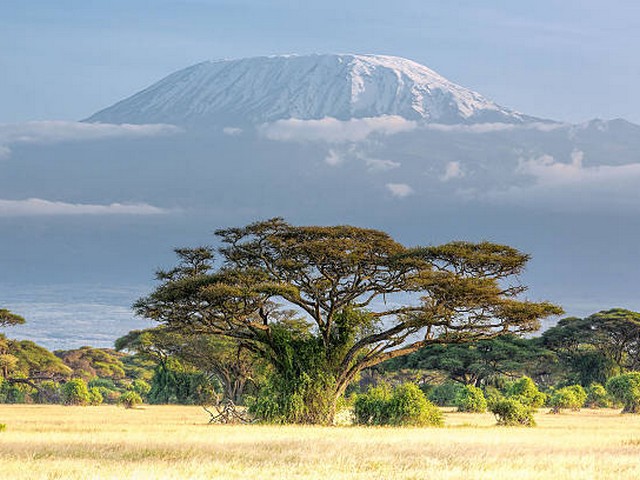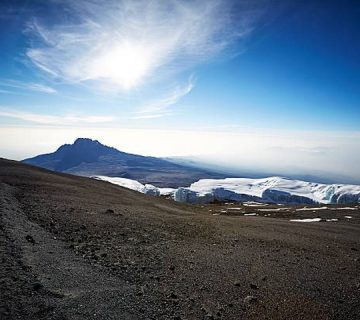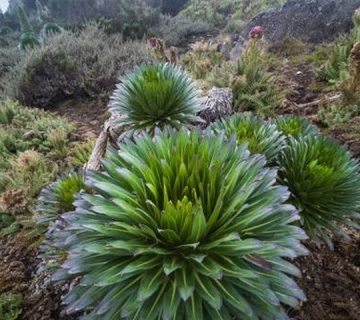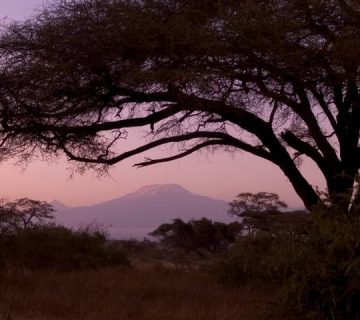Handling Extreme Weather Conditions On Kilimanjaro
Braving the Elements: A Guide to Conquering Africa’s Tallest Peak
Mount Kilimanjaro, a beacon for adventurers across the globe, isn’t just a climb—it’s an encounter with the raw forces of nature. At the Kilimanjaro Centre for Trekking and Ecotourism (KCTE), we’ve mastered the art of guiding bold spirits like you through the diverse climates of this majestic mountain. But why is understanding and preparing for extreme weather conditions crucial to the success of your Kilimanjaro adventure? Let’s ascend into this topic.
The Climate Kaleidoscope of Kilimanjaro
Kilimanjaro isn’t just another mountain; it’s a mosaic of ecological systems, each with its unique climate patterns. From the balmy rainforests at its base to the icy barrenness of its summit, understanding these zones is the first step to mastering the mountain.
1. The Rainforest Zone
Starting at the lush, rain-doused slopes, trekkers might experience sudden showers and thick fog. Waterproof gear and layers are essentials here, not just for comfort, but for safety.
2. The Heath and Moorland
As you ascend, the air cools and the vegetation thins. The weather here can swing from intense sunlit days to chilling nights. This zone demands thermal insulation and sun protection to navigate its extremes.
3. The Alpine Desert
Here, the true test begins. The landscape offers little shelter from the piercing sun during the day, while nights can plummet to below freezing. Layering is your best strategy, allowing for quick adaptation to shifting conditions.
4. The Arctic Summit
The summit of Kilimanjaro, Uhuru Peak, presents the harshest conditions. Temperatures can nosedive to -20°C (-4°F), with wind chill making it feel even colder. High-quality, insulated gear is non-negotiable here.
Gear Up: Essential Equipment for Every Climate Zone
Equipping yourself adequately is half the battle. At KCTE, we recommend:
- Waterproof and Breathable Clothing: Essential for comfort in the rainforest and beyond.
- Insulating Layers: Vital for the cold zones, they must be both light and effective.
- Strong Sunscreen and Sunglasses: The UV levels increase with altitude, making sun protection crucial.
- Sturdy Hiking Boots: They should be broken in, waterproof, and designed for varied terrain.
- Sleeping Bags Rated for Extreme Cold: Nights can be punishing; a good sleeping bag is your best night-time companion.
Navigating Weather Challenges: Tips and Tricks
Stay Hydrated
The importance of hydration cannot be overstressed, particularly in colder environments where you might not feel thirsty. Dehydration increases your risk of altitude sickness.
Understand the Signs of Hypothermia and Heat Exhaustion
Being able to identify symptoms of these conditions in yourself or others can be lifesaving. Quick response and appropriate first aid can make a significant difference.
Keep an Eye on the Weather Forecast
While mountain weather can be unpredictable, having a rough idea of expected conditions can help you prepare effectively. KCTE provides daily weather updates during treks.
Pace Yourself
Rapid ascents can make weather-induced ailments worse. A slow, steady pace helps in acclimatization and reduces exhaustion.
How KCTE Ensures Your Safety in Extreme Weather
At KCTE, your safety is our priority. Our guides are trained to handle severe weather conditions and are equipped with emergency first aid skills. We use real-time weather data to make informed decisions on the mountain. Our itineraries are designed to allow for weather challenges, ensuring that you have the best chance to enjoy and conquer Kilimanjaro safely.
Embrace the Challenge: Why Tackle Kilimanjaro?
Tackling Kilimanjaro offers more than just the physical challenge; it’s a journey through diverse climates, each providing a unique backdrop to your adventure. It’s about pushing your limits and experiencing the triumph of reaching the roof of Africa.
Ready for the Climb of a Lifetime?
Are you inspired to take on Kilimanjaro and handle everything it throws your way? Kilimanjaro Centre For Trekking and Ecotourism (KCTE) is here to guide you from the foothills to the summit. Handling extreme weather on Kilimanjaro is challenging, but with the right preparation and support, it’s an immensely rewarding adventure. Book your climb with us today, and take the first step towards a story you’ll tell for a lifetime!
FAQs About Climbing Kilimanjaro
Q: What is the best time of year to climb Kilimanjaro?
A: The best times are during the dry seasons, from June to October and from December to March. However, Kilimanjaro is accessible and climbable year-round.
Q: How do I acclimatize to avoid altitude sickness?
A: Acclimatization takes time. Our itineraries are designed to allow your body to adjust gradually to higher altitudes, increasing your chances of a successful summit.
Q: Can beginners climb Kilimanjaro?
A: Yes! Kilimanjaro is considered a trekking mountain suitable for able-bodied persons with proper training and preparations. KCTE offers routes and support for climbers of all experience levels.
Q: What should I do to prepare physically for the climb?
A: Regular cardiovascular training (running, cycling, swimming) combined with hikes and long walks, preferably on inclines, will help condition your body. Strength training, particularly for your legs and core, is also beneficial.
Embark on this journey with KCTE and experience the thrill of conquering Kilimanjaro under the safest guidance and most supportive team. Remember, every step you take is a step towards a breathtaking view from the top that promises to be as unforgettable as it is exhilarating. Let’s conquer Kilimanjaro together!




